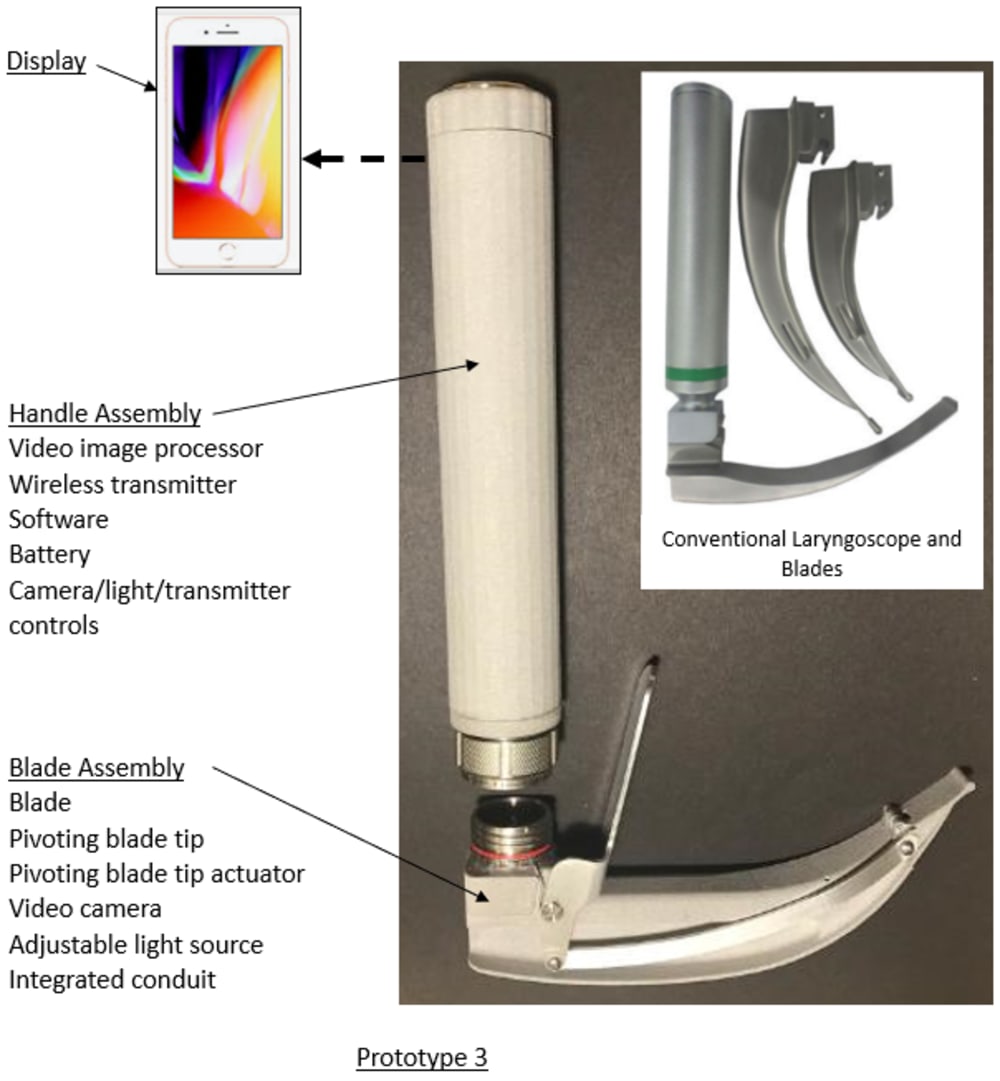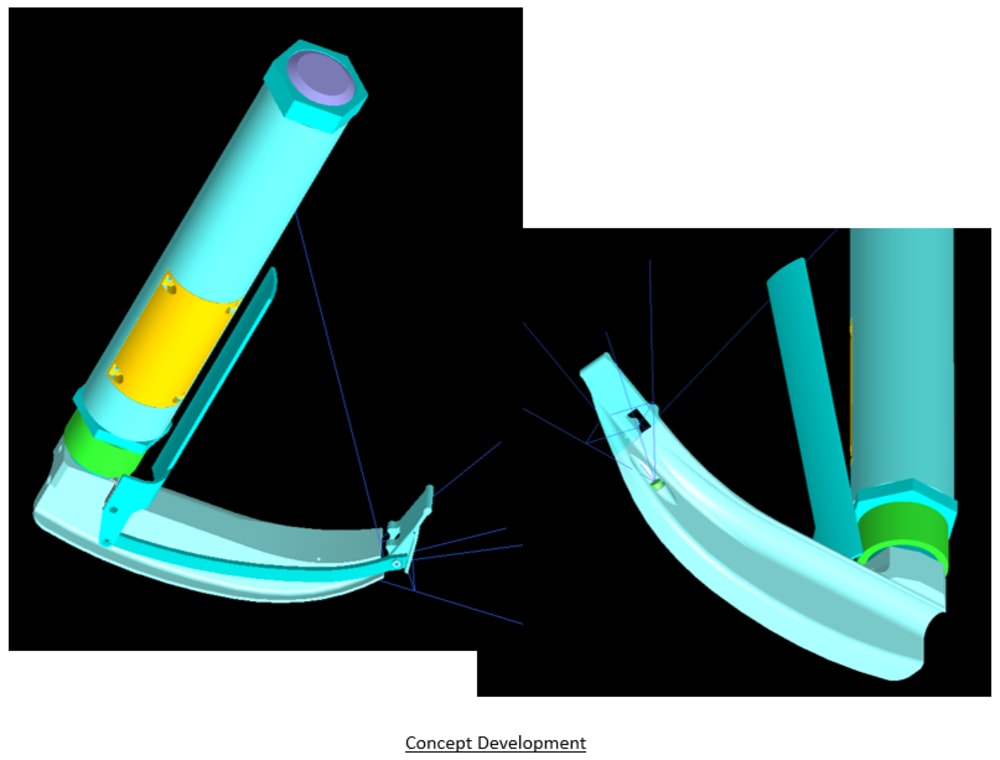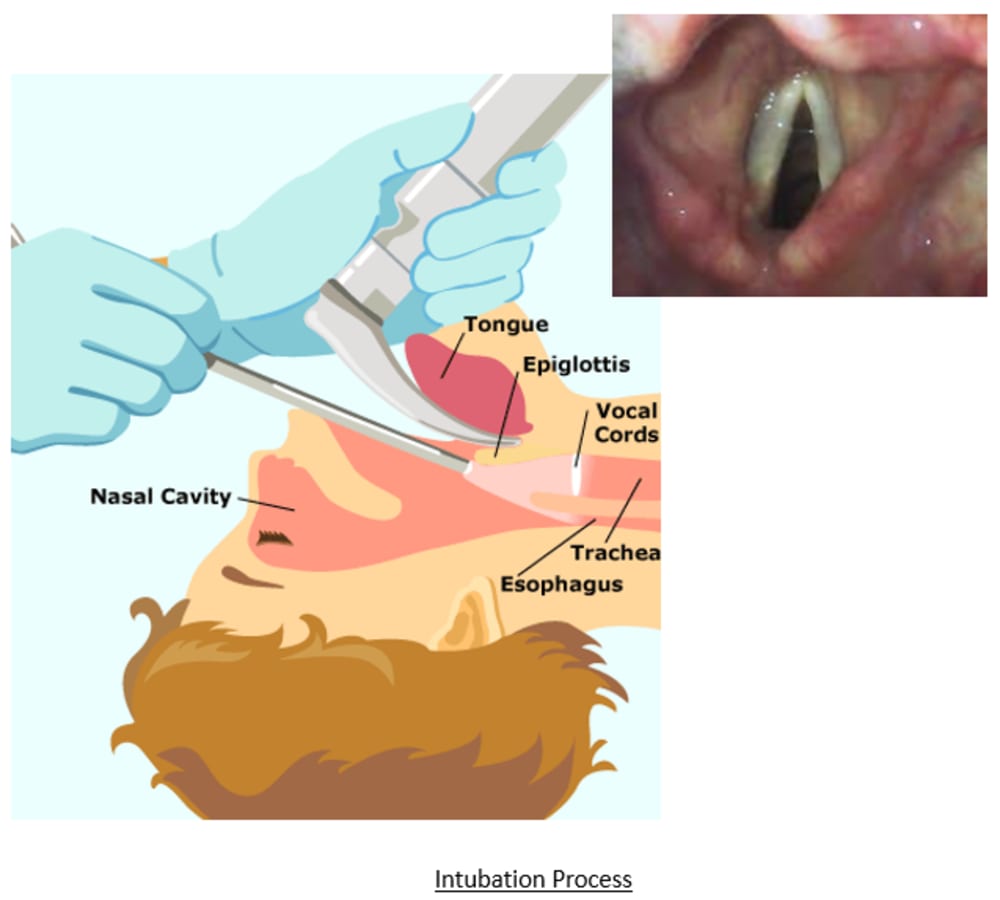
This device was developed to reduce complications and deaths during intubation and enable medical providers around the world to afford the best technology. Intubation is the process of inserting a flexible plastic tube into the trachea to administer oxygen or anesthesia or support breathing due to severe injury or illness. This design provides a uniquely robust, feature-rich, highly mobile, and cost-efficient solution which enables simultaneous direct (with the naked eye) and indirect (video-assisted) visualization of the laryngeal structures within a form factor that emulates a conventional direct visualization-only design.
The device incorporates these features in a Blade and Handle configuration:
- Simultaneous direct and indirect visualization
a. Reduces patient risk by eliminating the need for mid-procedure laryngoscope changes to prevent misinsertion of the tube. - Wireless transmittal of image to any Wi-Fi or Bluetooth enabled displays (cell phone, tablet…)
a. Reduces patient risk by eliminating display mass and volume from the device which can impede manipulation and direct visualization.
b. Reduces patient risk by eliminating management/impediment of an image transmission cable.
c. Reduces system cost. - Military-grade electro-mechanical interconnect between the Blade and Handle
a. Reduces patient risk by facilitating Handle and Blade sterilization.
b. Reduces patient risk by reducing particulate generation vs. the standard interface.
c. Reduces cost by enabling different camera-equipped Blades to be used on a single handle. - Novel actuator and lock for pivoting and retaining the Blade tip
a. Reduces patient risk by improving user control and direct visualization. - Fully sealed Handle and Blade assemblies
a. Reduces recurring costs by enabling sterilization for reuse. - Integrated accessory guide on the Blade
a. Reduces patient risk by facilitating precise positioning of intubation-associated devices. - Battery operated
a. Enables use anywhere at any time - not dependent on continuous access to a power source. Should the battery run out of power, direct visualization capability is not impaired.
b. Reduces patient risk by eliminating management/impediment of electric power cord. - Adjustable intensity and wavelength light source
a. Reduces patient risk by maximizing visualization. - Image processor and software allows image to be securely stored, enhanced and manipulated
a. Reduces patient risk by maximizing visualization.
A prototype with most of the above features has been fabricated and circulated to professionals in the medical industry. Feedback has been very positive regarding the ease of use and potential safety benefits of the design. Its simplicity and capability have been recognized as significant differentiators in execution of this highly time sensitive medical procedure. The next design iteration will reduce its size to match that of a conventional direct laryngoscope.
Analysis of manufacturing costs confirms this device can offer significant savings compared to less capable, more complicated systems. Given its conventional form factor, training on its utilization is all but eliminated further reducing deployment costs. Both of these factors would enable even financially challenged medical providers around the world to leverage the latest technology for the benefit of their patients.
-
Awards
-
 2021 Top 100 Entries
2021 Top 100 Entries
Like this entry?
-
About the Entrant
- Name:Sean Garry
- Type of entry:teamTeam members:Dr Michael Simon-Baker
Sean Garry - Patent status:none








